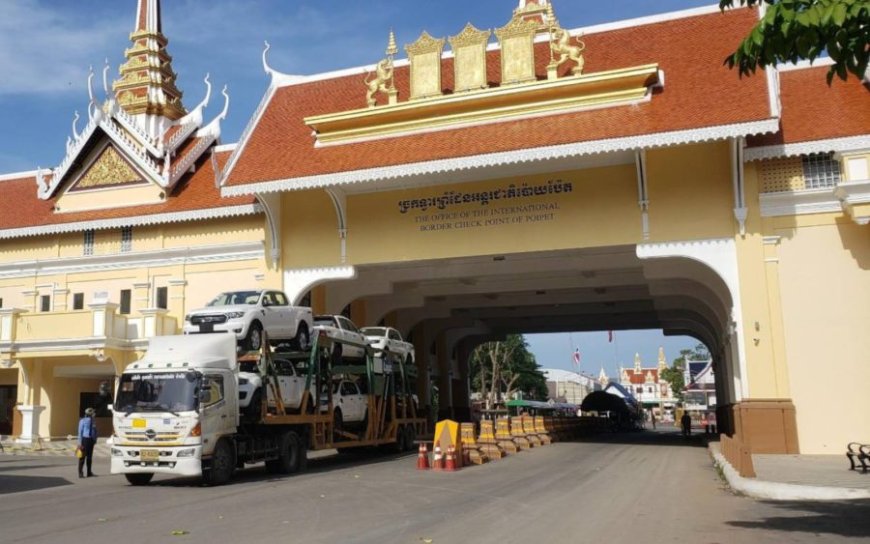Thailand–Cambodia Border Flare-Up: Heavy Shelling, Rising Death Toll and Mass Displacement
A major escalation along the Thailand–Cambodia border sees heavy artillery exchanges kill over 30 people, displace more than 130,000 civilians, and raise fears of broader conflict in Southeast Asia.

A sharp escalation in hostilities between Thailand and Cambodia has triggered the deadliest border conflict in over a decade, with heavy artillery, rocket fire, and air strikes displacing more than 130,000 civilians and leaving at least 30 dead. The violence, spanning multiple flashpoints along the 817 km disputed frontier, has drawn international concern and prompted both nations to recall ambassadors, signaling a breakdown in diplomacy.
1. Rapid Spread of Violence
On July 24–25, clashes intensified in at least 12 locations near the historic Preah Vihear temple and along the broader border region, including Surin province in Thailand and Oddar Meanchey in CambodiaWikipedia+15Reuters+15Reuters+15The Guardian+2Reuters+2Reuters+2. Initial small arms fire quickly escalated into heavy shelling, rocket barrages, and a rare deployment of Thai F‑16 jets to strike Cambodian military targets—marking the first use of air power in the conflictReuters+3Reuters+3Reuters+3.
Thailand has accused Cambodia of targeting civilian infrastructure with Russian-made BM‑21 rockets, while Cambodia has condemned Thailand’s use of cluster munitions, calling them violations of international lawReuters+2Reuters+2Reuters+2.
2. Humanitarian Toll: Deaths and Displacement
At least 20 people have died on the Thai side—including 13 civilians and one soldier—with dozens more injured. Cambodia has reported at least one death, though casualty figures remain unconfirmed from its sideWikipedia+15Reuters+15The Economic Times+15.
The fighting has forced over 130,000 Thais and roughly 1,500 Cambodian families to flee their homes. Many evacuees have taken shelter in university sports halls and community centres with improvised protection measuresReuters. Local narratives describe daily life upended—children pulled from classrooms, families losing crops, and displacement deepening poverty and trauma.
3. Historical Context: A Disputed Frontier
The Thailand–Cambodia border remains a legacy of colonial-era tensions, traced back to a 1907 map by French authorities. Key flashpoints include the temple of Preah Vihear, awarded to Cambodia by the ICJ in 1962, yet regularly igniting nationalist discordReuters+3Reuters+3Wikipedia+3. Sporadic skirmishes throughout the 2010s underscored unresolved territorial grievances.
The most recent trigger was a landmine incident on May 27 in Nam Yuen district, where Thai patrols stepped on newly laid PMN‑2 mines. Thailand attributed the act to Cambodian forces—who deny involvement—and downgraded diplomatic ties over the incidentReuters+9Reuters+9The Economic Times+9Reuters+12Wikipedia+12Wikipedia+12.
4. Escalation and Military Posture
On July 23, Thailand recalled its ambassador and expelled Cambodia’s envoy in retaliation for another landmine injury to a Thai soldier. The Thai military subsequently closed four shared border checkpoints and placed units on full combat readinessThe Guardian+4Wikipedia+4Reuters+4.
The escalation turned kinetic on July 24, with Thailand deploying F‑16 jets and Cambodia responding with rocket barrages. Thailand’s Defence Ministry decried the actions as deliberate targeting of civilians, labeling them war crimes. Cambodia, citing provocation, requested a meeting of the UN Security Council to highlight “Thai aggression”The Guardian+4Reuters+4Reuters+4.
5. Diplomatic Reactions and Regional Mediation Offers
ASEAN leaders, including Malaysian Prime Minister Anwar Ibrahim, called for an immediate ceasefire. Cambodia formally endorsed the Malaysian proposal, while Thailand later agreed in principle under unspecified “conditions on the ground”Al Jazeera+3Reuters+3Reuters+3. Offers of mediation from the U.S., China, and Malaysia were reportedly declined by Thailand, which prefers bilateral dialogueReuters+2Reuters+2Reuters+2.
The UN Security Council scheduled a closed meeting to assess regional implications, while the Swedish foreign ministry and other governments issued travel advisories and evacuation assistance warningsOmniAftonbladet.
6. Civilian Impacts: Fleeing Homes and Finding Shelter
Scenes from Thailand’s eastern Surin province describe lives upended: families forced into improvised shelters, children pulled from sports days, and farmers abandoning fields to reach the safety of evacuation centresReuters+5Reuters+5Reuters+5. One evacuee recounted:
“We heard explosions. We packed what we could and fled. This is no way to live.”
These harrowing accounts are echoed in Cambodian border towns, where limited shelter capacity and continued shelling drive residents toward humanitarian need.
7. Implications for ASEAN and Regional Stability
Analysts warn the conflict may undermine ASEAN unity, as member states press for diplomacy while the belligerents engage militarily. Cambodia’s appeal to the UN and Thailand’s diplomatic intransigence expose divisions within ASEAN crisis management mechanismsReuters+3Reuters+3Reuters+3.
Nearby countries including Vietnam, Malaysia, and Myanmar have urged restraint. The U.S. State Department called for an immediate end to hostilities and protection of civiliansReutersReuters.
At stake is not only border sovereignty but also heritage sites like Preah Vihear, regional trade routes, and domestic political stability in Bangkok and Phnom Penh.
8. Risks of Wider War and Escalation
Thailand’s acting Prime Minister Phumtham Wechayachai warned that continued artillery exchanges could escalate into full-scale war. Cambodia's Prime Minister Hun Manet accused Thai forces of retreating on ceasefire commitments within an hour of agreementWikipedia+6Reuters+6Reuters+6.
Human rights groups and international legal experts have raised alarms over alleged war crimes, especially the reported use of cluster bombs and shelling of hospitals and schoolsOmniReuters.
9. What Lies Ahead
If hostilities continue, further displacement and increased destruction are likely. Analysts expect:
-
The UN Security Council to issue statements or resolutions
-
ASEAN-led peace proposals and sanctions risk
-
International pressure on Thailand and Cambodia to restore border governance frameworks
-
Post-conflict humanitarian needs surge, including shelter, food, and medical aid
Diplomatic efforts and military de-escalation will be key to preventing the conflict from widening.
Conclusion
The border conflict between Thailand and Cambodia has morphed into the region’s most severe military clash in over a decade, with heavy weaponry, civilian suffering, and geopolitical tremors. As artillery roars across disputed frontier lines, the human cost mounts and regional stability hangs in the balance.
For ASEAN and the international community, the challenge is clear: contain escalation, protect civilians, and revive dialogue before local flashpoints become wider crises. Today’s exchanges may fuel tomorrow’s reconciliation—or risk irreparable damage to Southeast Asia’s fragile peace.




















































